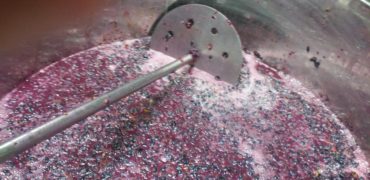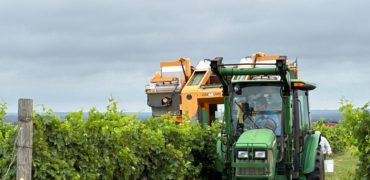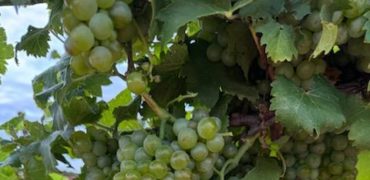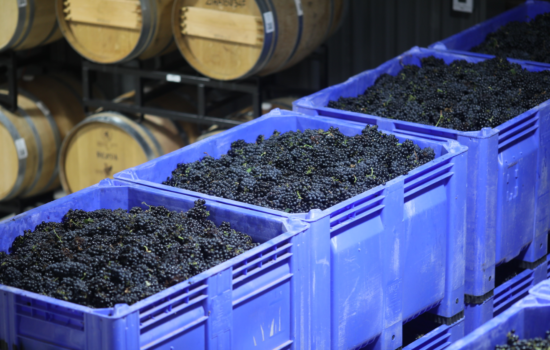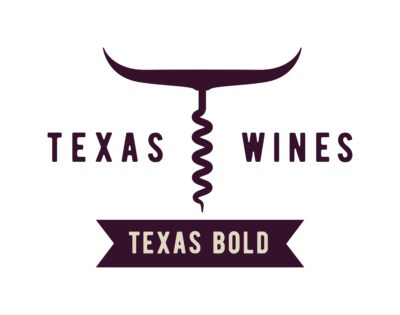Vineyards are scurrying across our country trying to find a suitable labor force to harvest grapes in vineyards from Texas to California to the East Coast. One thing is certain is that this harvest will have a serious labor shortage. The border with Mexico is closed. As a result, vineyards are scurrying to find help. If you want to experience a grape harvest in Texas, California, or elsewhere in our USA, now is the time to get that experience and to get paid in many vineyards in California! Many of the legal farmhands are experiencing COVID19 outbreaks in their dormitories. Vineyards in our country are beginning to recognize how great mechanical harvesting is, especially in light of the labor shortage. One mechanical harvester is the equivalent to 100 human grape pickers, plus or minus. California and certain parts of Texas are too hilly for these mechanical harvesters to work since flat land is required for the safe operation of these twenty feet tall machines. As a result, hill country vineyards require hand pickers. With there being a serious shortage of labor, it appears some grapes will not get harvested.
I have picked grapes by hand and have experienced how efficient mechanical harvesters are. These mechanical harvesters travel at a rate of a person on foot, harvesting one row of grapes at a time. Mechanical harvesters can accumulate enough grapes in an hour to fill an 18-wheeler for a run to the winery’s CRUSH PAD. Picking by hand is slows and takes six to eight hours to fill that truck. As a result, hand-picked grapes start to ferment BEFORE getting to the winery with temperatures in the grape bins being ten to fourteen degrees warmer than the ambient air temperature. Surprisingly, machine harvested grapes have less MOG (material other than grapes). Harvest costs are also substantially cheaper with savings normally going to the consumer. Two negatives for mechanical harvesters are the loss of the romance in harvesting grapes the old fashioned way AND the grapes come in broken to the winery CRUSH PAD. That should not be a problem since the grapes are de-stemmed and then mechanically crushed at the winery.
Where do you find volunteer opportunities to hand-harvest grapes? In Texas, this weekend you can pick grapes starting at 6:30 AM at Red Caboose Winery near Meridian, Texas. You must email Gary McKibben at [email protected] to get on the volunteer list. Wineries in the Texas Hill country might also be looking for volunteers to help. Please email me at [email protected] for opportunities to get paid in California vineyard harvest.
Grape Creek Vineyards Report near Fredericksburg
Various vineyards throughout the Texas will be providing me with reports on their vineyards as we near harvest. Grape Creek Vineyards appears to be heading into a harvest of epic proportions. Heather De Laurentis with Grape Creek Vineyards reported, “Overall, the weather was kind to us with no late freezes and we dodged most of the hail storms, in one case by only a couple of miles. Overall, we have seen a pretty good growing season. We received rains in Spring and early Summer, which is when we like them, followed by sunny days. As a result we have had less disease pressure with dry canopies. We keep our canopies open with fruit zone leaf pulling and hedging. All of this allows us to get greater hang time and more grape maturity for harvest.
We aggressively shoot thin and cluster thin to manage vigor and reduce crop load to intensify the flavors and colors of our estate fruit.
Our newest producing block is comprised of Tannat and Petite Sirah. Both varietals have successfully completed veraison and we anticipate harvesting soon. Our Albarino has already been picked and the Montepulicano and Agliancio are about two weeks further out. We typically select lower latitude grape varieties to weather the hill country climate. However, we have been testing three different clones of Cabernet Sauvignon and chose one for a larger planting, along with Malbec and Petit Verdot. As a result, we are excited we will offer a Bordeaux-style red in a few years. We utilized uber vines for this planting. They are grafted to the rootstock at 3 feet above ground instead of the traditional 6-inches. This results in faster vine development and more effective training due to less suckers and random growth.
We expect to harvest a total of 25-30 tons from 18 producing acres (excluding the 4 acre Bordeaux block) for a yield of 1.4 to 1.7 tons per acre. We purposefully control our yields to lower levels than most Texas vineyards. While expensive, the result is worth the effort—deeper color and full aromas and flavors.”

